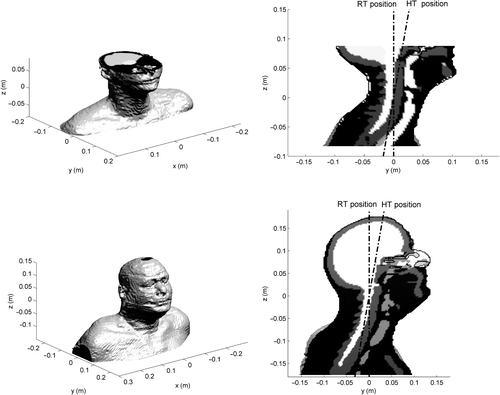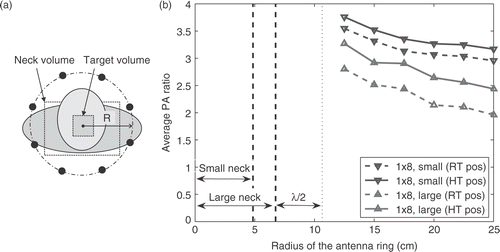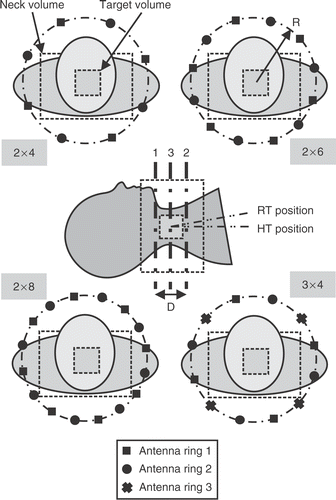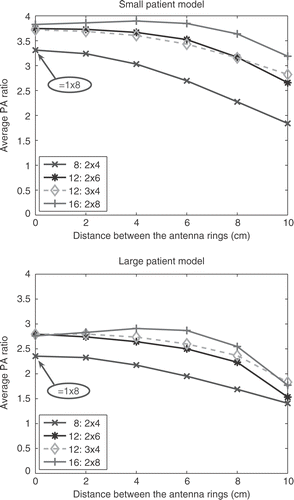Figures & data
Figure 1. 3D view (a, c) and sagittal cuts (b, d) of the tissue distribution of the two head models. (b) and (d) show the RT position and an indication of the HT position (10° rotation).

Table I. Dielectric properties at 433 MHz of the tissues types corresponding to the two head models (μr = 1.0).
Figure 3. Cross-sections of the PA distributions in the large patient model in HT position for one ring of eight dipoles (1 × 8, R = 20 cm) and two rings of six dipoles (2 × 6, R = 20 cm, D = 6 cm). Black arrows indicate the locations of PA hotspots (1 × 8) or corresponding locations where these hotspots are reduced (2 × 6).

Figure 4. Average PA ratios as a function of antenna ring radius for a setup of eight antennas: setup (a) and results (b). Curves correspond to results for a small and a large patient model in RT and HT (10°rotation around the x-axis) position. The average radius of these models and the near field distance (λ/2), where the dipole antennas should not be placed, are indicated.


